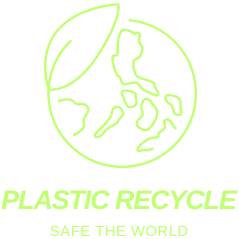
Plastic recycling has gained significant attention in recent years due to the growing environmental concerns associated with plastic waste. As technology advances and awareness increases, several promising trends are emerging in the field of plastic recycling.

1. Advanced Recycling Technologies
- Chemical Recycling: This process involves breaking down plastic waste into its constituent monomers, which can then be used to produce new plastic materials. Chemical recycling offers the potential to recycle a wider range of plastic types, including mixed plastics and contaminated plastics.
- Biodegradation: Researchers are developing biodegradable plastics that can break down naturally in specific environmental conditions. These materials offer a more sustainable alternative to traditional plastics.
- Pyrolysis: Pyrolysis involves the thermal decomposition of plastic waste in the absence of oxygen. This process can produce valuable byproducts such as fuels, oils, and carbon black.
2. Improved Sorting and Separation Technologies
- Optical Sorting: Advanced optical sorting systems can accurately identify and separate different types of plastic based on their physical and chemical properties.
- Near-Infrared Spectroscopy (NIR): NIR technology can be used to identify and sort plastics even when they are contaminated or mixed.
- Artificial Intelligence (AI): AI-powered systems can analyze and learn from vast amounts of data to optimize the sorting and recycling process.
3. Increased Use of Recycled Plastic in Products
- Consumer Demand: Growing consumer awareness of plastic waste and recycling is driving demand for products made from recycled plastic.
- Product Innovation: Manufacturers are developing new products and applications that incorporate recycled plastic, such as packaging materials, textiles, and building materials.
- Government Regulations: Governments are implementing regulations to promote the use of recycled plastic in products.
4. Circular Economy Models
- Closed-Loop Systems: Creating closed-loop systems where plastic materials are recycled and reused within the same production process.
- Extended Producer Responsibility (EPR): Holding manufacturers responsible for the end-of-life management of their products, including plastic waste.
- Collaborative Efforts: Fostering collaboration between industry, government, and consumers to promote a circular economy for plastics.
5. Technological Advancements in Recycling Facilities
- Automation: Implementing automation and robotics to improve the efficiency and cost-effectiveness of recycling facilities.
- Energy Efficiency: Improving the energy efficiency of recycling processes to reduce environmental impact and operating costs.
- Waste-to-Energy: Exploring the potential of converting plastic waste into energy through processes like gasification or incineration.
6. Consumer Education and Awareness
- Public Campaigns: Raising awareness about the importance of plastic recycling and the environmental impacts of plastic waste.
- Consumer Education: Providing consumers with information on proper waste disposal and recycling practices.
- Sustainable Consumption: Promoting sustainable consumption habits, such as reducing plastic use and choosing products made from recycled materials.
7. International Cooperation
- Global Standards: Developing and implementing international standards for plastic recycling to ensure consistency and effectiveness.
- Cross-Border Cooperation: Enhancing cooperation between countries to address the challenges of plastic waste trade and illegal dumping.
- Knowledge Sharing: Facilitating the exchange of knowledge and best practices among different regions and countries.
As technology continues to advance and environmental concerns grow, the future of plastic recycling looks promising. By embracing these trends and investing in innovative solutions, we can move towards a more sustainable and circular economy for plastics.
read more : Latest Technologies in Plastic Recycling




